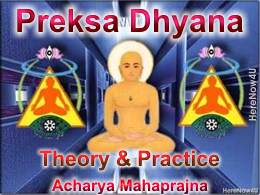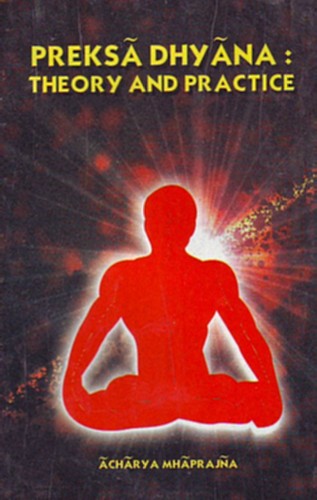
Tension Causes Psychological Distortions
In this age of technology, industrialisation and overpopulation, we are constantly subjected to tremendous stresses and tensions. These, in turn, produce psychosomatic diseases like hypertension, insomnia, and various types of heart problems. In desperation, people take to drinking and dangerous drugs, which give temporary relief, but create more serious problems. The remedy does not lie in drugs or fantasy, but in the process of catharsis and development of the inherent powers.
Today eminent doctors, specialists and general practitioners alike, have realised that meditation is a powerful therapy both for healing and maintaining good health. Irrefutable scientific proofs now available show that meditation and consciously achieved total relaxation can cure and prevent any number of diseases, which are caused by tension and stress. Scientific investigations have provided evidence that regular practice of meditation positively influences the control mechanism, which is ultimately responsible for the homeostasis in the body. It produces a more balanced equilibrium between the sympathetic and the para-sympathetic components of the autonomic nervous system. The benefits of meditational practice are measurable and can be obtained by anybody who cares to learn the technique and practise it regularly.
Improvement of physical health and cure (and prevention) of serious illnesses without injurious drugs, though a valuable contribution, is not the only or even the chief objective of meditation. It is, in reality, the apparatus for controlling one's irrational instincts of anger, aggression, cruelty, vindictiveness and fear. It is a tool for awakening and developing one's conscious reasoning and thereby modifying one's attitude and behaviour to be truly worthy of being a human being. It is a ‘process of remedying inner incompleteness and reducing inner discord ‘ as aptly stated by William James. The main objective of meditation is, thus, not to acquire physical goodness but to acquire total 'psychical' goodness by eradicating all evil from one's thoughts, speech and action.
Attitudinal Change; Behavioural ModificationSometimes a person behaves well - he thinks good and acts well. But sometimes he (the same person) behaves wickedly - has evil thoughts and commits evil acts. This conflict goes on and on. And again, frequently we come across someone who earnestly desires to be self-controlled and change his bad habits, who wants to be virtuous and determinedly get rid of his vices. He resolves to be good, takes vows not to go astray and makes a determined effort to change his way of life. But alas! The vows and pious resolutions fail to make a significant change in his attitude and behaviour. The innate bad habits do not change nor does the ingrained viciousness disappear. Questions then arise: Why does this happen? Why is the same person sometimes virtuous and sometimes vicious? Why do one's mood, thought and behaviour change so often? Why does self-control fail to make one a good man in spite of his earnest desire? Why can't the behavioural pattern of a man be changed by vows and resolutions? The answer is: The effect of emotion and urge on human actions is stronger than that of theoretical knowledge. The fact is that man's attitude and behaviour are not simple mental functions, which can be regulated and changed at will or by will-power alone.
Recent scientific advances have shown that the irrational instincts and impulses emanate from the endocrines, and not from the brain. They not only generate feelings but also demand appropriate action to satisfy the need. The endocrine secretions called hormones produce all the impelling forces. Hormones have profound influence upon the mental states and tendencies, behavioural patterns as well as emotions of an individual. Frequent emotional stresses result in psychological distortions and irrational behaviour.
A pious resolution may, therefore, repress or suppress an evil urge but is not potent enough to destroy it. And the repressed impulse simply goes 'underground' in the subconscious part of the mind, continues to fester there, and resurfaces with more vigour later on. Until one finds a potent weapon, which can destroy the evil impulsive forces, one cannot achieve a lasting change of behaviour. Such a potent weapon is perception of psychic centres - the endocrines.
Higher levels of consciousness achieved by regular practice of perception of these psychic centres will
- immensely strengthen the power of the unique human attribute - rational thinking and conscious reasoning, and
- weaken the forces of irrational impulses and primal drives. The cumulative effect of this two-fold transformation would ultimately eradicate the psychological turmoil and irrational behaviour.
Once the impelling forces of the evil urges are transmuted, there will be no need to resort to repression or suppression.
Precondition of Meditation
Kayotsarga is an essential pre-requisite for all types of meditation. In meditation the body has to be kept absolutely still and motionless,and this can only be done by the release of tensions by relaxation.
So long as there is mental tension and the nerves are taut and highly strung up, how can one expect to perform meditation?
Kayotsarga means perfectly motionless and tensionless state of the body. Just as steadiness of mind is meditation, so is the steadiness of the body. Maintaining a motionless state of the body is physical meditation and is an essential base and prerequisite of all other meditational exercises. As long as there is any physical movement, meditation is out of question. Steadiness of mind requires steadiness of breath and the latter is acquired only with physical immobility. Hence the most important element of the basic meditational pre-requisite is the physical immobility. Kayotsarga is motionless state of the body.
Auto-suggestion is the basic principle of the technique of relaxation. In practice, the body is mentally divided into small parts and each part is relaxed, in turn, by auto-suggestion until the entire body is free from tension.
 Acharya Mahaprajna
Acharya Mahaprajna

